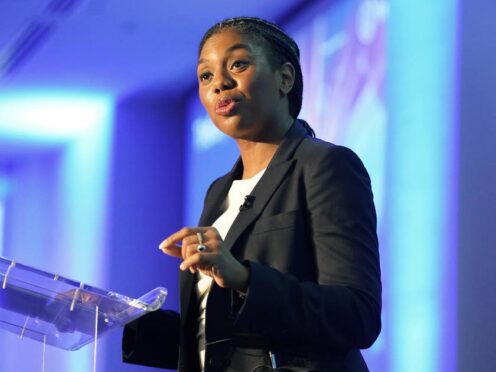
Kemi Badenoch has called on people to give examples of how public bodies use incorrect guidance on access to single-sex spaces, with an aim to “tackle any confusion” on the matter.
The launch of the women and equalities minister’s “call for input” comes a day after the Health Secretary announced plans to overhaul the NHS constitution to “ensure that biological sex is respected”.
The Department of Health and Social Care said on Tuesday that it is “defining sex as biological sex” with the new document, which underpins NHS care.
Proposed changes will also ensure hospital patients in England have the right to request to be treated on single-sex wards, with transgender people placed in rooms on their own.
The Government Equalities Office said its call for input builds on this, and will move to clear up confusion in what Ms Badenoch described as a “complex” area involving public spaces.
The department said businesses and other organisations can legally provide single and separate-sex services including toilets, changing rooms, and female-only fitness classes “which exclude transgender people of the opposite biological sex who do not have a Gender Recognition Certificate (GRC)” and that in some cases those with such certificates can also be excluded.
But the minister said some organisations have been “afraid of backlash if they are seen to get it wrong”, with cases where organisations believe they are required to allow access to such services to self-identifying transgender people.
She said: “Single-sex spaces are essential for ensuring privacy and dignity for women. I do recognise, however, that the law in this area is complex, and I know that some organisations are confused and afraid of backlash if they are seen to get it wrong.
“So I am asking people to submit real-world examples of organisations using incorrect guidance, so that our policymaking continues to tackle any confusion and we ensure single-sex spaces are maintained.”
Gendered Intelligence, a charity which describes its aims as increasing understanding of gender diversity and improving the lives of trans people, branded the minster’s call “an attempt to bully organisations who support transgender people”.
Cleo Madeleine, from the organisation, said: “The law is clear: both on the right trans people have to use services and spaces appropriate to their gender, and on the rare circumstances where exemptions can be made.
“More to the point, trans people, like anyone else, deserve basic human dignity. It’s sad to see that trampled by a minister who ought to advocate equality for all.”
The Equality and Human Rights Commission (EHRC) states that there are circumstances under the Equality Act where a lawfully established separate or single-sex service provider can exclude, modify or limit access to their service for trans people, but that it must be shown that doing so is a proportionate means of achieving a legitimate aim.
The call for input runs on the Equality Hub website for eight weeks from Wednesday and covers Great Britain.

Enjoy the convenience of having The Sunday Post delivered as a digital ePaper straight to your smartphone, tablet or computer.
Subscribe for only £5.49 a month and enjoy all the benefits of the printed paper as a digital replica.
Subscribe